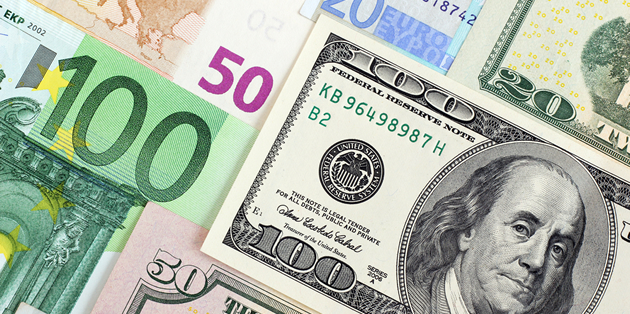- Euro on mixed form amidst data shortage – Stronger Irish and Finish inflation of limited impact on single currency
- BoE unexpectedly left interest rates unchanged – EUR GBP exchange rate slumped due to lack of fresh easing measures
- Hawkish comments failed to shore up US Dollar – Lack of safe-haven demand undermined ‘Greenback’
- Eurozone and US inflation figures in focus – Stronger US data likely to weigh on EUR USD exchange rate
Consumer Price Index reports from the Eurozone and US will be of note today, with signs of stronger inflationary pressure expected to provoke EUR USD exchange rate volatility.
As it stands, the Euro remains trending in a weaker position against the Pound, with the EUR GBP exchange rate trending in the region of 0.8328 and the EUR USD exchange rate trending in the region of 1.1138.
The UK’s Construction Output report for the UK had little impact on Sterling despite showing a decided downturn in production in May.
Weaker Eurozone Trade Surplus Predicted to Dent Euro (EUR) Demand
There was little in the way of domestic data to drive demand for the Euro (EUR) on Thursday, although the single currency nevertheless made gains against the US Dollar (USD). Investors remained largely concerned with the outlook of the currency union, particularly with the start of EU exit negotiations with the UK nowhere in sight. Both the Finish and Irish inflation rates showed some improvement in June, however, offering some encouragement that conditions across the Eurozone remained relatively optimistic.
Today’s Eurozone trade balance for May is unlikely to provoke particular volatility for the common currency, with the data largely considered outdated in the current market climate. Nevertheless, if the trade surplus is shown to have narrowed more severely than forecast this could discourage investors from buying into the Euro. Also of note will be the finalised Eurozone Consumer Price Index for June, which is not expected to show any change from the provisional figure. Even so, any signs of stronger inflationary pressure could see the single currency making more substantial gains against rivals.
Surprise Inaction from the BoE Prompted Sharp Rally for Pound (GBP) Exchange Rate
Confidence in the Pound (GBP) was sharply boosted in the wake of the Bank of England’s (BoE) first post-Brexit policy meeting. While markets had generally anticipated that policymakers would cut interest rates to a fresh record low this was ultimately proved misguided, as only one member of the Monetary Policy Committee (MPC) voted in favour of lowering rates. This prompted Sterling to rally strongly across the board, making strong gains thanks to the unexpected nature of this apparent confidence.
Nevertheless, the bullishness of the Pound is unlikely to last over the coming days thanks to the meeting minutes pointing towards the prospect of easing in August. As analysts at Danske Bank noted:
‘We continue to expect it to cut rates down to 0.00% and possibly ease using unconventional tools as well in August but given today’s announcement, we believe the risk is the BoE will ease less aggressively, e.g. by cutting only 25bp. If it does not lower the Bank Rate to 0.00% in August, we believe it will do so eventually, as we expect the UK to fall into recession in H2 16.’
The initial relief from the BoE’s lack of action is expected to fade ahead of the weekend, particularly if there are any further developments in the domestic political scene pertaining to the Brexit question.
EUR USD Exchange Rate Forecast to See Volatility on US Retail Sales and Inflation Data
Diminished market risk aversion saw the US Dollar weakened, particularly as the latest Jobless Claims data proved mixed. Hawkish words from Philadelphia Federal Reserve President Patrick Harker did not do anything to boost the appeal of the ‘Greenback’, despite his estimation that interest rates should rise twice before the end of the year. This was due to the fact that Harker is not currently a voting member of the Federal Open Market Committee (FOMC), leaving the chances of an imminent return to monetary tightening effectively unchanged.
Greater volatility is expected for the ‘Greenback’ ahead of the weekend, with a number of high-impact US ecostats set to move the markets. Advance Retail Sales, Consumer Price Index and University of Michigan Confidence Index results will all be of note to investors. Should the figures point towards greater robustness in the US economy then the Euro to US Dollar (EUR USD) exchange rate is likely to weaken, with stronger data offering a better indication on the direction of the Fed’s policy.



